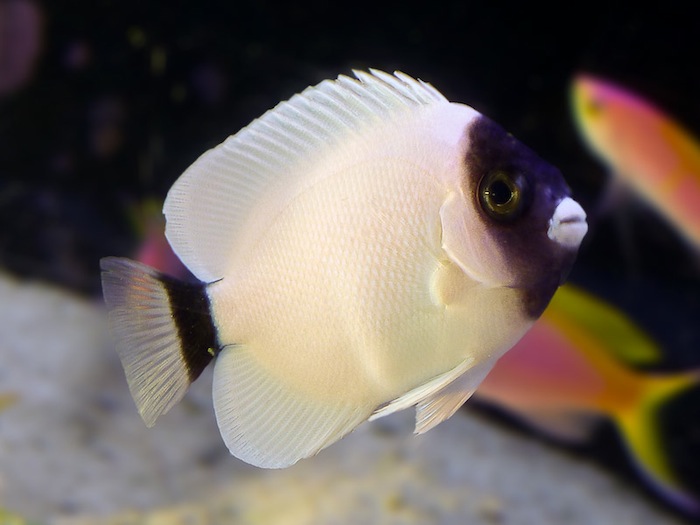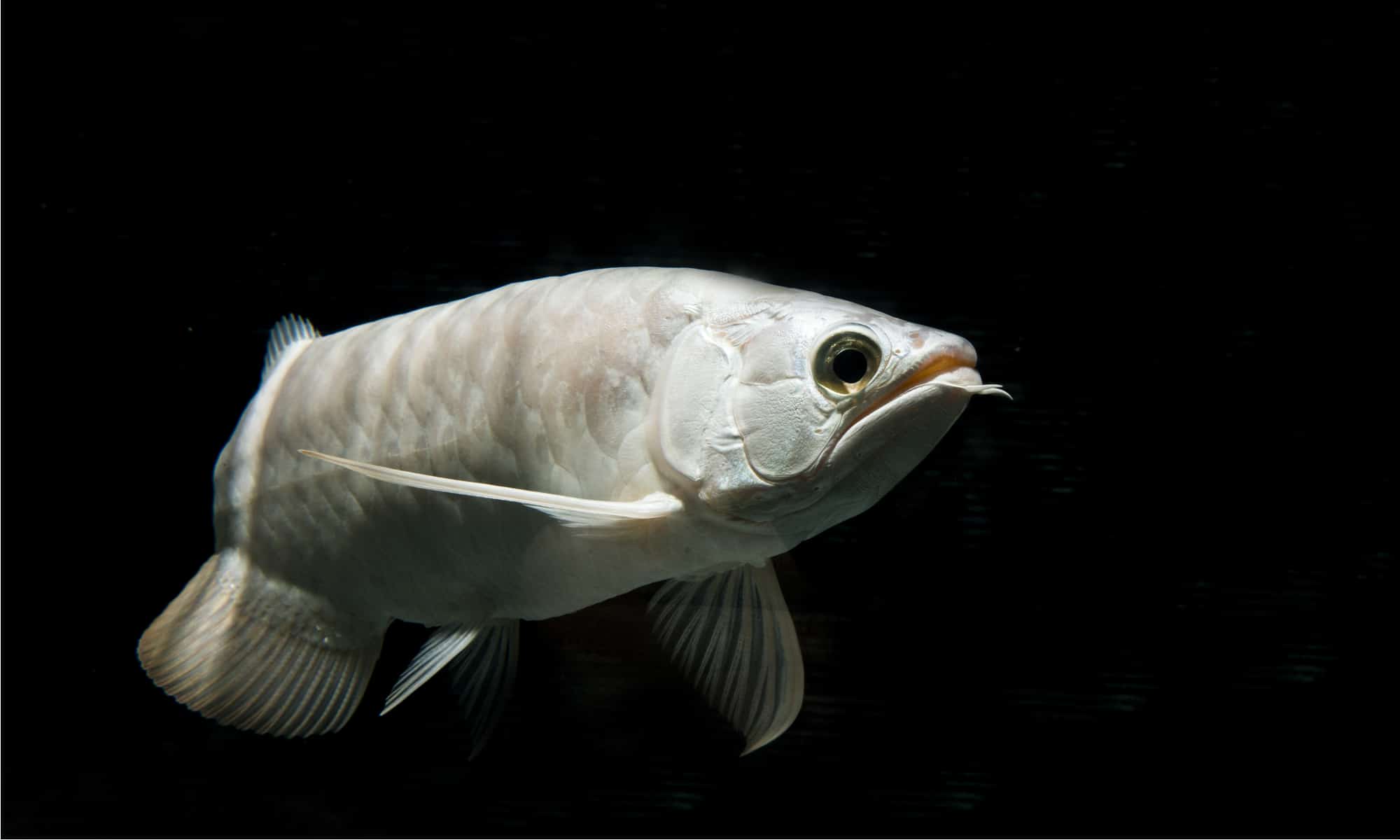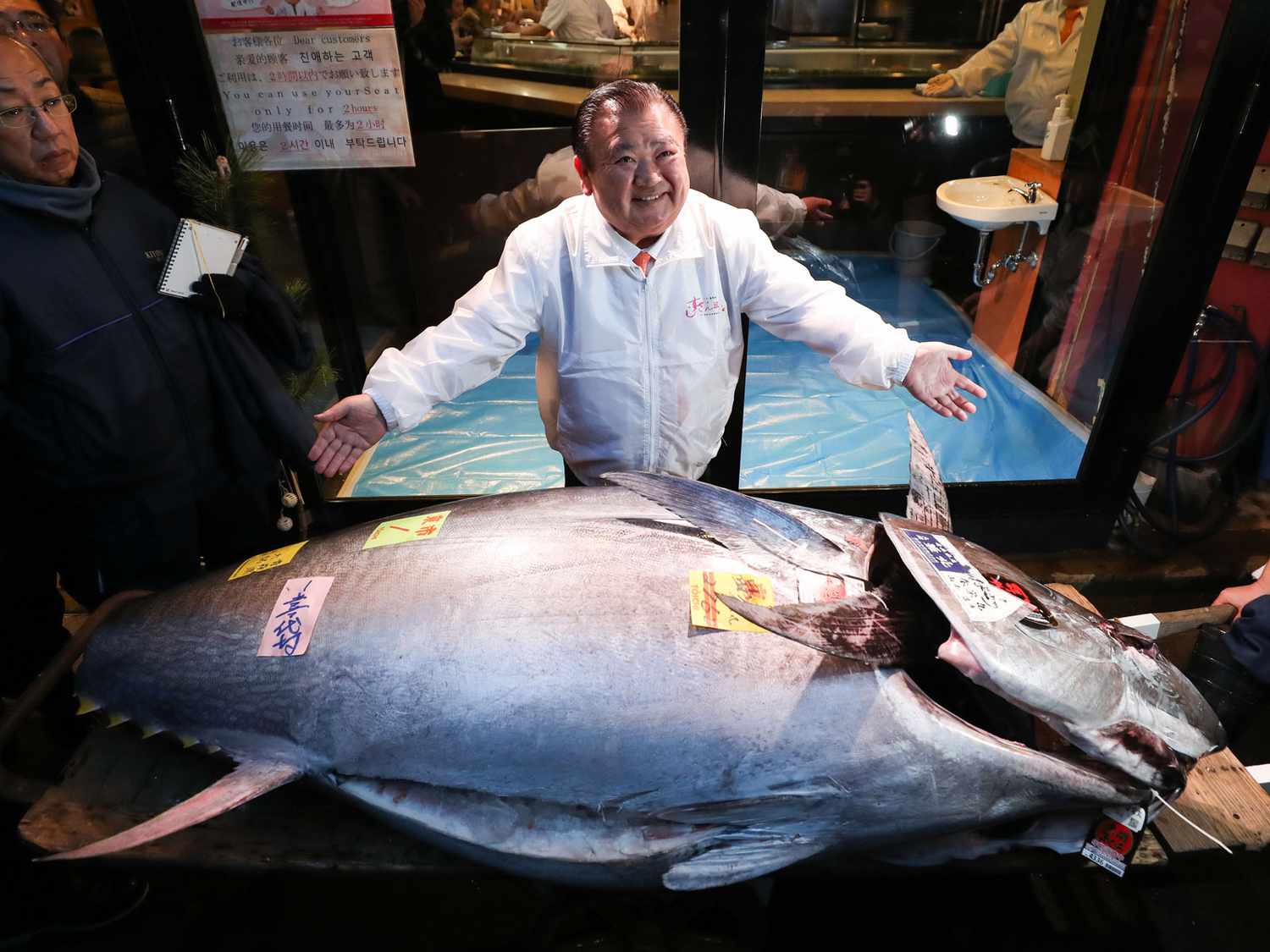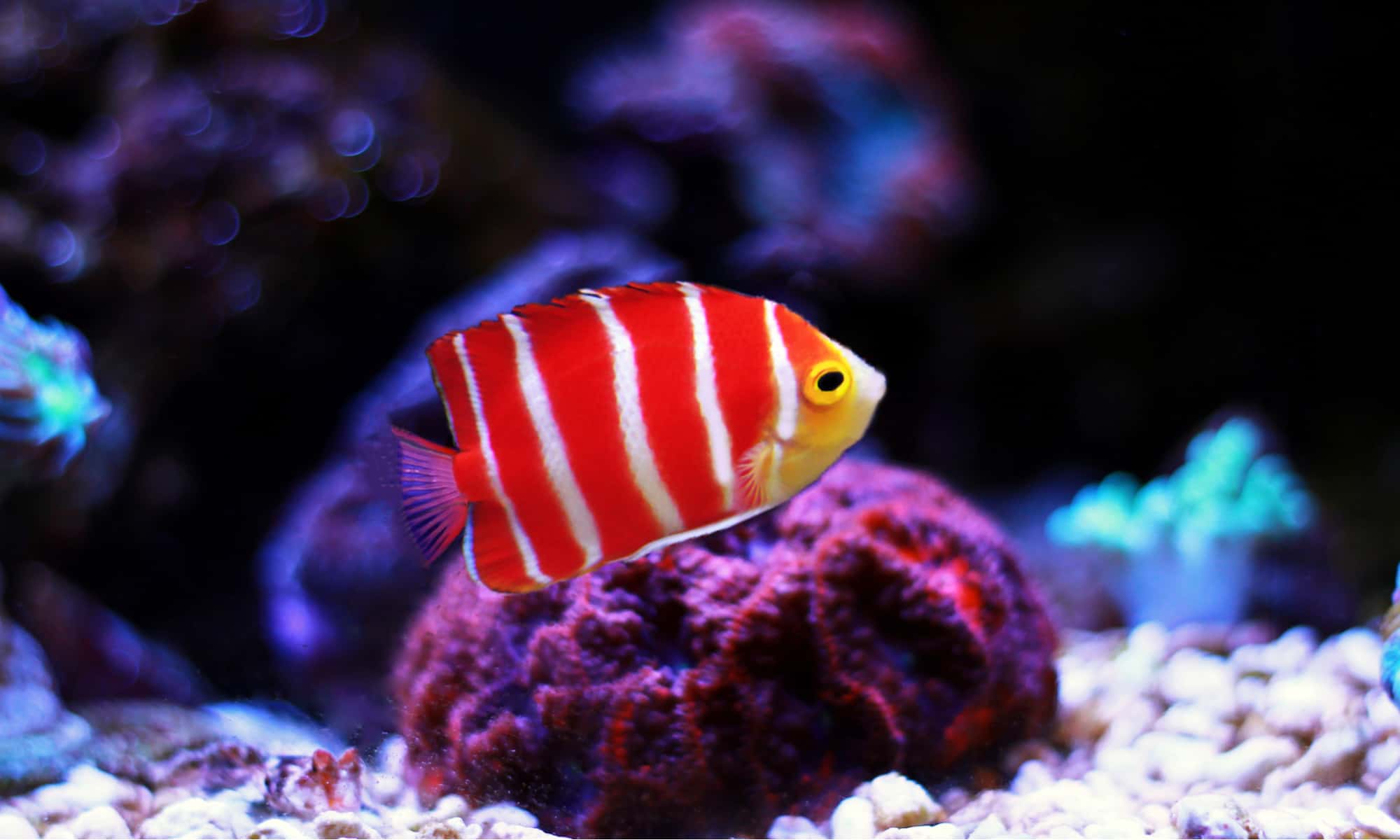Aquariums are a popular way to bring a piece of the ocean into your home. From colorful coral to exotic fish, there’s no shortage of options to choose from. But have you ever wondered which fish are the most expensive? While some fish are sold for food, others are sold as pets and can fetch a high price.
In this article, we’ll take a look at the top 10 most expensive fish in the world, according to various sources. These fish are sold as pets and can cost anywhere from a few thousand dollars to hundreds of thousands of dollars. Keep reading to learn more about these fascinating and expensive creatures.
You are reading: The Top 10 Most Expensive Fish

The Top 10 Most Expensive Fish
Platinum Arowana

The Platinum Arowana is the most expensive fish in the world, according to various sources. This freshwater fish has a long, slim body with a metallic appearance and can grow to over 4 feet in length.
The Platinum Arowana is highly sought-after and can sell for $400,000 or more. Due to its high value, these fish are given a microchip before they are sold. Keeping a Platinum Arowana as a pet requires a large tank of at least 250 gallons.
Bluefin Tuna

Bluefin Tuna is one of the most expensive fish in the world, and it is commonly found in the Pacific, Indian, and Atlantic Oceans. This fish is highly prized for its use in sushi and sashimi, and its price can range from $20 to $5,000 per pound depending on factors such as quality and location.
The Bluefin Tuna can grow up to 10 feet long and weigh close to 1,000 pounds, making it a large and impressive fish. Due to the decline in wild Bluefin populations, the availability of this fish has decreased, leading to a significant rise in prices.
In 2019, a 612-pound Bluefin Tuna was sold for $3 million at the first Bluefin Tuna auction of the year in Japan. While the price of Bluefin Tuna can vary greatly depending on factors such as location and season, it remains one of the most expensive and sought-after fish in the world.
Freshwater Polka Dot Stingray
The Freshwater Polka Dot Stingray, also known as the Xingu River Ray, is a species of freshwater fish in the family Potamotrygonidae. This stingray is native to the Xingu River basin in Brazil and prefers clear waters with rocky bottoms.
Here are some facts about the Freshwater Polka Dot Stingray:
– Appearance: The Polka Dot Stingray has a black to dark brown, smooth, oval-shaped body with light round to oval spots covering the top half of its body.
– Venom: The stingray is venomous and contains venom localized at its dentine spine in its tail. The venom composition does not change with maturation, but the venom toxicity decreases as rays get older.
– Diet: The jaw shape, stiffness, and mineralization of the stingray are strengthened with age, which allows mature rays the ability to consume hard-shelled invertebrates.
– Popularity: The Freshwater Polka Dot Stingray is a popular fish among monster fish hobbyists and is known as the Black Diamond Stingray or BD.
– Captive breeding: Captive breeding of the species has risen the captive population.
If you are interested in keeping a Freshwater Polka Dot Stingray as a pet, it’s important to note that they require a large tank and specialized care.
Peppermint Angelfish

Read more : The Top 10 Deadliest Animals In The World
The Peppermint Angelfish (Centropyge boylei) is a small and colorful marine angelfish that is native to the Central area of the South Pacific Ocean, particularly around the Cook Islands.
Here are some interesting facts about the Peppermint Angelfish:
– Appearance: The Peppermint Angelfish has a unique and striking appearance, with a small body that grows up to 3 inches long and five alternating vertical bright orange and white stripes along its entire body that resemble the peppermint candy for which they’re named. The side fins and tail fin are completely translucent.
– Habitat: The Peppermint Angelfish is found at depths of 55 to 120 meters (180 to 394 ft) on areas of coral rubble, overhangs, and caves situated in the steep outer slopes of reefs. They prefer to hide in rocky caves and coral reefs down to a depth of some 300 or 400 feet.
– Diet: The Peppermint Angelfish’s diet is thought to be made up of worms, crustaceans, sponges, tunicates, and detritus.
– Popularity: The Peppermint Angelfish is a popular fish among aquarium hobbyists and is known as the “Holy Grail” of saltwater fish. It is occasionally exported as an aquarium specimen and can fetch high prices.
– Systematics: The Peppermint Angelfish was first formally described in 1992 by John Ernest Randall and Richard Pyle. Its specific name honors the collector of the type, Charles “Chip” J. Boyle.
If you are interested in keeping a Peppermint Angelfish as a pet, it’s important to note that they require a minimum tank size of 55 gallons and specialized care.
Masked Angelfish
The Masked Angelfish (Genicanthus personatus) is a species of marine angelfish belonging to the family Pomacanthidae.
Here are some interesting facts about the Masked Angelfish:
– Endemic to Hawaii: The Masked Angelfish is native to the Hawaiian Islands and is known only from this region.
– Appearance: This angelfish is largely a brilliant white color at all ages, with juveniles having an area of black color that covers most of their heads. As the fish grows, the black on the head reduces in extent, and their lips turn bluish white while their caudal fins darken to become black.
– Depth Range: The Masked Angelfish is found at depths between 10 and 150 meters (33 and 492 feet).
– Captive Breeding: While the Masked Angelfish is a rare and expensive species, there have been limited successful attempts at captive breeding. This has allowed for a small availability of captive-bred individuals in the aquarium trade.
– Popularity and Rarity: The Masked Angelfish is highly sought after by aquarium hobbyists due to its beauty and limited availability. It is often considered a prized addition to reef aquariums.
If you are interested in keeping a Masked Angelfish as a pet, it’s important to note that they require a minimum tank size of 100 gallons and specialized care.
Bladefin Basslet
The Bladefin Basslet (Jeboehlkia gladifer) is a small and rare deepwater reef fish that belongs to the family Serranidae. Here are some interesting facts about the Bladefin Basslet:
– Appearance: The Bladefin Basslet is torpedo-shaped with a compressed body and grows no longer than 3 inches. It has a white body with a white band running along the middle of the head and a wide red bar running from the soft rayed portion of the dorsal fin vertically on the body onto the anal fin. The anal and dorsal fins have white edges, the pelvic fins are white, and the caudal fin is red with a white posterior margin.
– Habitat: The Bladefin Basslet is found in deep reefs at depths ranging from 100 to 395 meters (328 to 1,296 feet).
– Popularity and Rarity: The Bladefin Basslet is one of the rarest and most expensive reef fish in the world, with a price tag of up to $8,000 for a 1.5-inch fish. Due to its rarity, it is highly sought after by aquarium hobbyists and is considered a prized addition to reef aquariums.
– Diet: The Bladefin Basslet feeds on small crustaceans and other small invertebrates.
– Captive Care: The Bladefin Basslet requires specialized care and a minimum tank size of 30 gallons. It is recommended to keep this fish in a deep sand bed with plenty of live rock and to provide a varied diet.
If you are interested in keeping a Bladefin Basslet as a pet, it’s important to note that they require specialized care and are not recommended for beginners.
Neptune Grouper
The Neptune Grouper (Cephalopholis igarashiensis) is a deepwater species of marine fish that belongs to the subfamily Epinephelinae, which is in the family Serranidae. Here are some interesting facts about the Neptune Grouper:
– Habitat: The Neptune Grouper is found on coral reefs at depths of 80 to 250 meters (260 to 820 feet) in the Indo-Pacific.
– Appearance: The Neptune Grouper is a brilliantly-colored and modestly-sized fish that can grow up to 12 inches in length. It has a bright yellow body with a blue-green head and fins.
– Popularity and Rarity: The Neptune Grouper is one of the rarest and most expensive reef fish in the world, with a price tag of up to $6,000. Due to its rarity, it is highly sought after by aquarium hobbyists and is considered a prized addition to reef aquariums.
– Diet: The Neptune Grouper feeds on small fish, crustaceans, and other invertebrates.
– Culinary Use: The Neptune Grouper is also used for culinary purposes in Japan, where it is served as sashimi.
If you are interested in keeping a Neptune Grouper as a pet, it’s important to note that they require specialized care and a minimum tank size of 100 gallons.
Flathead Perch
The Flathead Perch (Rainfordia opercularis), also known as Rainford’s perch, is a species of marine ray-finned fish that belongs to the subfamily Epinephelinae of the family Serranidae.
Here are some interesting facts about the Flathead Perch:
– Habitat: The Flathead Perch is found in the eastern Indian Ocean and in the Western Pacific Ocean, particularly in northern Australia.
– Appearance: The Flathead Perch has a unique and striking appearance, with a flat head and a compressed body that grows up to 8 inches in length. It has bright orange and aqua-colored stripes along its body.
– Popularity and Rarity: The Flathead Perch is a rare and expensive species, with a price tag of up to $1,000. Due to its rarity, it is highly sought after by aquarium hobbyists and is considered a prized addition to reef aquariums.
– Diet: The Flathead Perch feeds on small fish, crustaceans, and other invertebrates.
– Captive Care: The Flathead Perch requires specialized care and a minimum tank size of 100 gallons. It is recommended to keep this fish in a deep sand bed with plenty of live rock and to provide a varied diet.
If you are interested in keeping a Flathead Perch as a pet, it’s important to note that they require specialized care and are not recommended for beginners.
Wrought Iron Butterflyfish
The Wrought Iron Butterflyfish (Chaetodon daedalma) is a species of marine ray-finned fish, a butterflyfish belonging to the family Chaetodontidae.
Read more : The Top 10 Coolest Animals In The World
Here are some interesting facts about the Wrought Iron Butterflyfish:
– Appearance: The Wrought Iron Butterflyfish is mainly metallic black in color with yellow margins to the dorsal, anal, and caudal fins. The body has some markings resembling a crosshatch pattern, and the scales have pale yellow centers and broad black margins forming a lattice or netted pattern. This species attains a maximum total length of 15 centimeters (5.9 in).
– Habitat: The Wrought Iron Butterflyfish is native to the western Pacific Ocean near central and southern Japan. They prefer rocky reefs where they graze on algae and benthic invertebrates, including fanworms, hydroids, gastropods, barnacles, and tunicates.
– Popularity and Rarity: The Wrought Iron Butterflyfish is one of the rarest and most expensive reef fish in the world, with a price tag of up to $4,000. Due to its rarity, it is highly sought after by aquarium hobbyists and is considered a prized addition to reef aquariums.
– Diet: The Wrought Iron Butterflyfish feeds on plankton and grazes on benthic algae and invertebrates.
– Captive Care: The Wrought Iron Butterflyfish requires specialized care and a minimum tank size of 100 gallons. It is recommended to keep this fish in a deep sand bed with plenty of live rock and to provide a varied diet.
If you are interested in keeping a Wrought Iron Butterflyfish as a pet, it’s important to note that they require specialized care and are not recommended for beginners.
Clarion Angelfish
The Clarion Angelfish (Holacanthus clarionensis) is a species of marine angelfish that belongs to the family Pomacanthidae.
Here are some interesting facts about the Clarion Angelfish:
– Habitat: The Clarion Angelfish is found in the eastern Pacific Ocean, almost exclusively near islands off the Pacific coast of Mexico. They are found in rocky reefs at depths of up to 30 meters (98 feet).
– Appearance: The Clarion Angelfish has a striking appearance, with a bright yellow body and blue-black stripes on its head and fins. It can grow up to 1 foot in length.
– Popularity and Rarity: The Clarion Angelfish is a rare and expensive species, with a price tag of up to $2,500. Due to its rarity, it is highly sought after by aquarium hobbyists and is considered a prized addition to reef aquariums.
– Diet: The Clarion Angelfish feeds on sponges, tunicates, and other invertebrates.
– Captive Care: The Clarion Angelfish requires specialized care and a minimum tank size of 100 gallons. It is recommended to keep this fish in a deep sand bed with plenty of live rock and to provide a varied diet.
If you are interested in keeping a Clarion Angelfish as a pet, it’s important to note that they require specialized care and are not recommended for beginners.
FAQS
1. What is the most expensive fish in the world?
The most expensive fish in the world is the Platinum Arowana, which can sell for upwards of $400,000.
2. Are these fish sold for food or as pets?
The fish on this list are sold as pets and are kept in aquariums.
3. Can I keep these fish as pets?
Yes, you can keep these fish as pets, but they require specialized care and a minimum tank size. It’s important to research the specific needs of each fish before purchasing.
4. Why are these fish so expensive?
These fish are expensive due to their rarity, unique appearance, and high demand among aquarium hobbyists.
5. Can I find these fish in the wild?
Some of these fish can be found in the wild, but they are often rare and difficult to catch.
6. Are these fish endangered?
Some of these fish are endangered, and their capture and sale may be illegal or unethical. It’s important to research the legality and ethical considerations before purchasing any of these fish.
7. Can I breed these fish in captivity?
Breeding some of these fish in captivity is possible, but it requires specialized knowledge and equipment. It’s important to research the specific breeding requirements of each fish before attempting to breed them.
Source: https://petstutorial.com
Category: Animals










